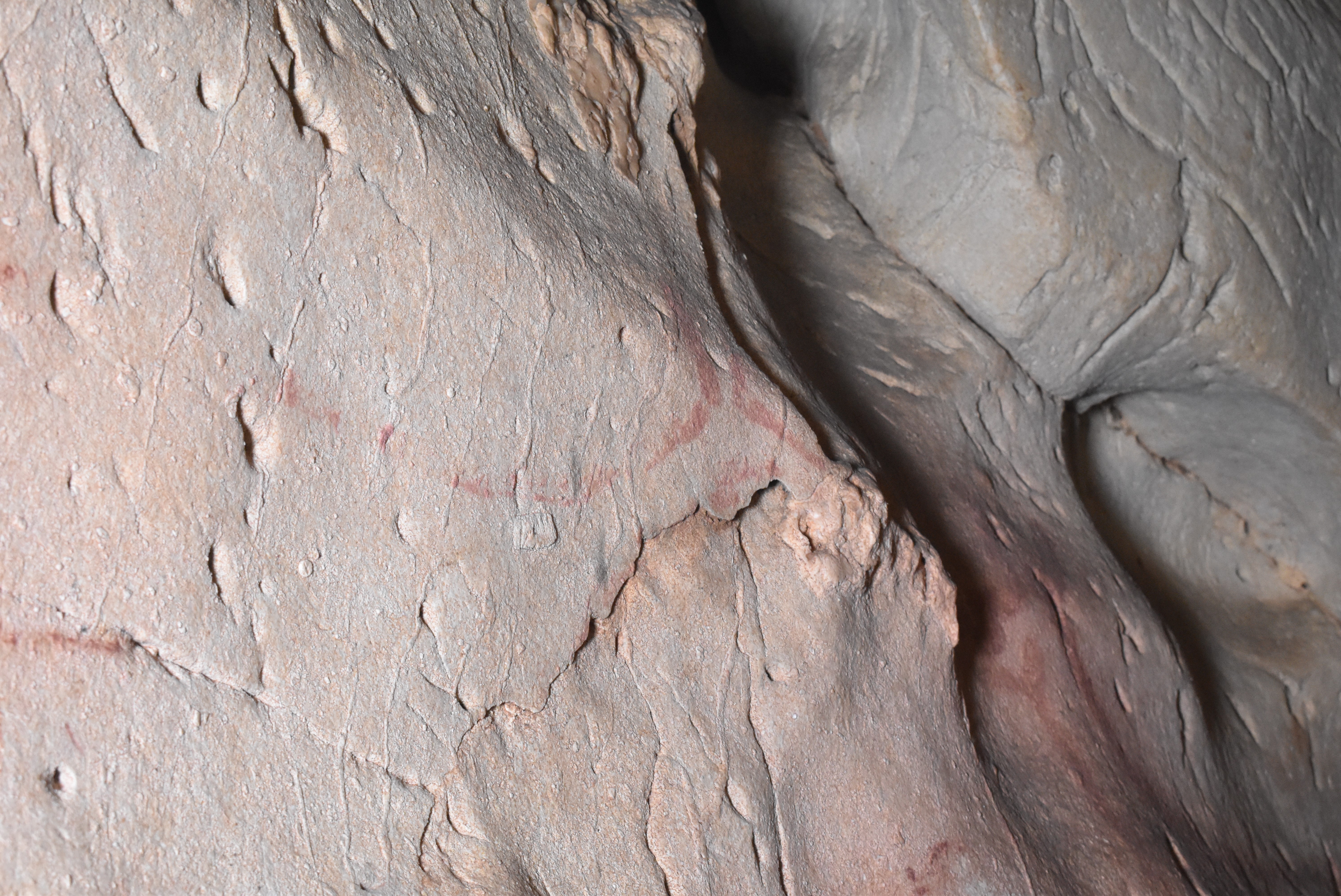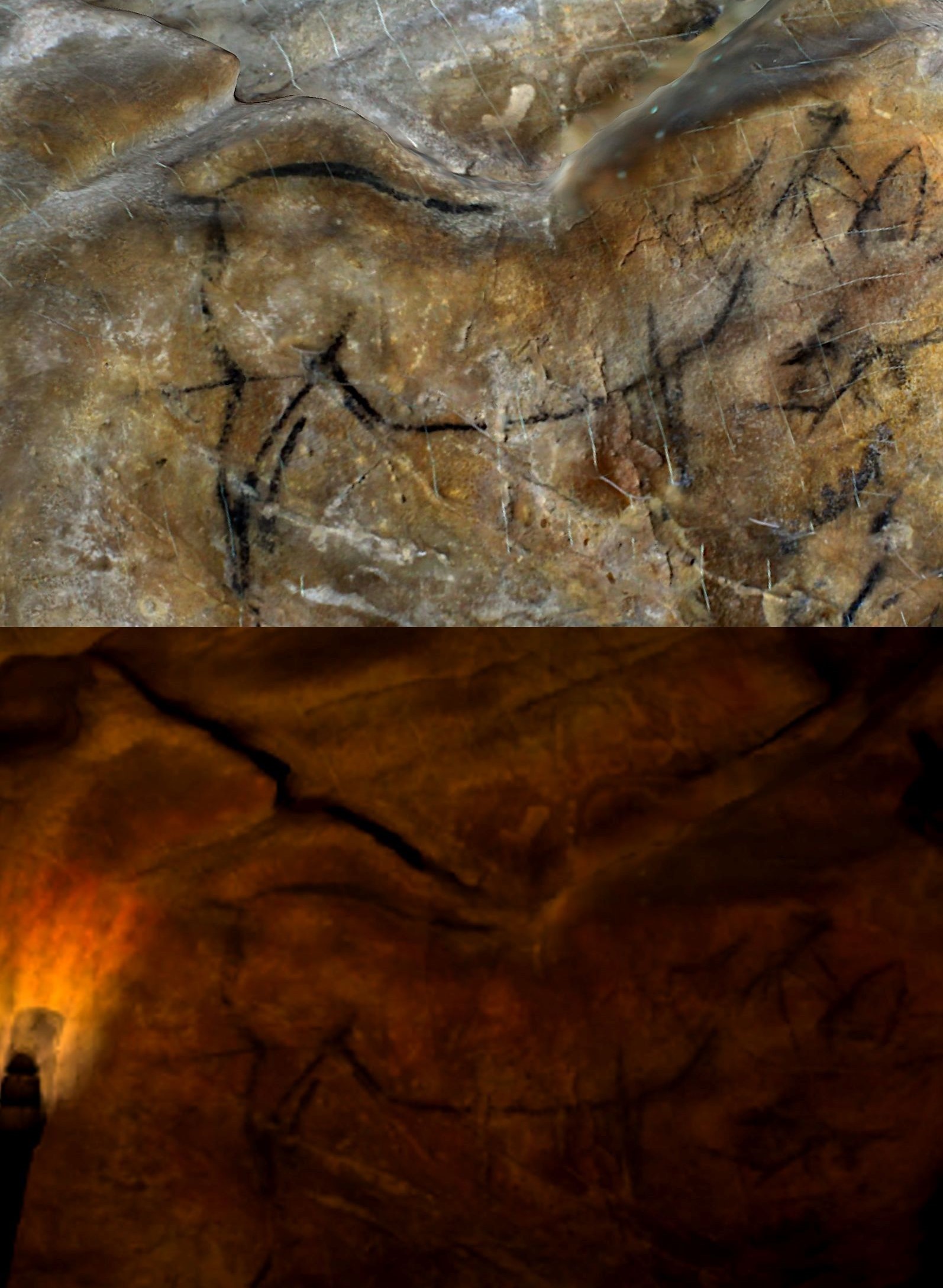The human tendency to see faces and other meaningful forms in random patterns may have influenced the cave art created by our Ice Age ancestors, new research suggests. According to the study authors, ancient artists probably recognized animal forms in the cracks and curves in cave walls, often using these natural features as a scaffold for their painted designs.
From the Man in the Moon to the face of Jesus appearing on pieces of toast, our unique ability to identify non-existent forms comes down to a psychological phenomenon called pareidolia. To determine whether ancient humans were equally programmed to see illusory shapes, the researchers examined Stone Age rock art painted onto the walls of the Las Monedas and La Pasiega caves in northern Spain.
Their analysis revealed that the majority of the painted figures incorporated natural topographic features of the cave walls, indicating that pareidolia may have inspired the artists. For example, the researchers observed cracks that were used to represent bison’s horns and natural curves being used to depict animals’ backs.
“Seventy-one per cent of images in Las Monedas and 55 per cent of those in La Pasiega demonstrably integrate topographic features into their outline imagery,” write the study authors.
“Given the amount of available wall space that was not utilized for figurative depictions in both caves, but particularly for Las Monedas, this cannot have been coincidental,” they continue. “Rather, it suggests that the integration of wall and image was intentional, and therefore that the pareidolia evidenced in the majority of cases played an active part in the creation of animal representations in these caves.”

A Palaeolithic painting of a hind (female deer) from the cave of La Pasiega. The Palaeolithic artist who made this depiction followed the natural shape of the cave wall and traced cracks to produce the image.
Image credit: Izzy Wisher, courtesy of the Gobierno de Cantabria
Commenting on these findings in a statement, study author Izzy Wisher said “it is exciting to see that cave artists in the Upper Palaeolithic era were also experiencing pareidolia, just like many of us do today, and that this influenced their art.”
“Much like a modern artist might take inspiration from a basic form or shape, like a crack in a material or a smudge of paint on a canvas, and build their art around this, we can see that cave artists worked in similar ways,” she explained.
Generally, pareidolia causes us to see shapes that are quite basic and lacking in fine detail. The researchers therefore predicted that the paintings incorporating natural features should be devoid of complexity.
However, while this was generally true, a large proportion of paintings that didn’t include topographic features were also found to be extremely basic, making it difficult to fully validate this hypothesis.
Finally, the study authors used virtual reality software to simulate the effects of flickering firelight within the cave, on the premise that low and unstable lighting might enhance pareidolia. Contrary to this expectation, however, they found no evidence that simple paintings incorporating cave features were more obscured by firelight than more complex designs that didn’t include topographic features.

Top image: Upper Palaeolithic drawing of a bison in vertical orientation, which uses the edge of the cave wall surface to represent the back. Bottom image: The same bison drawing under the simulated VR light conditions.
Image credit: Izzy Wisher, courtesy of the Gobierno de Cantabria
“It therefore seems that the reason behind pareidolia having a stronger influence over certain depictions than others appears not to have any clear relationship to lighting conditions,” write the researchers.
Taken together, these results suggest that pareidolia may have played a role in the artistic decisions taken by ancient humans, but this explanation doesn’t paint the whole picture.
Overall, then, Wisher said: “it seems to us that their art may have been part of a ‘creative conversation’ with the cave walls, where they both took inspiration from what they saw in the cracks and shapes of the cave wall, but also used their own creativity.”
The study is published in The Cambridge Archaeological Journal.
Source Link: The Reason We See Jesus In Toast May Explain Ancient Humans' Cave Art